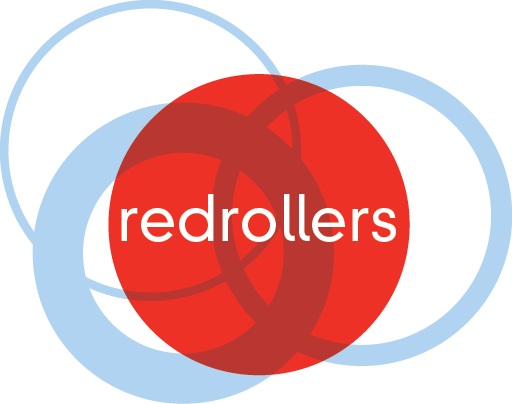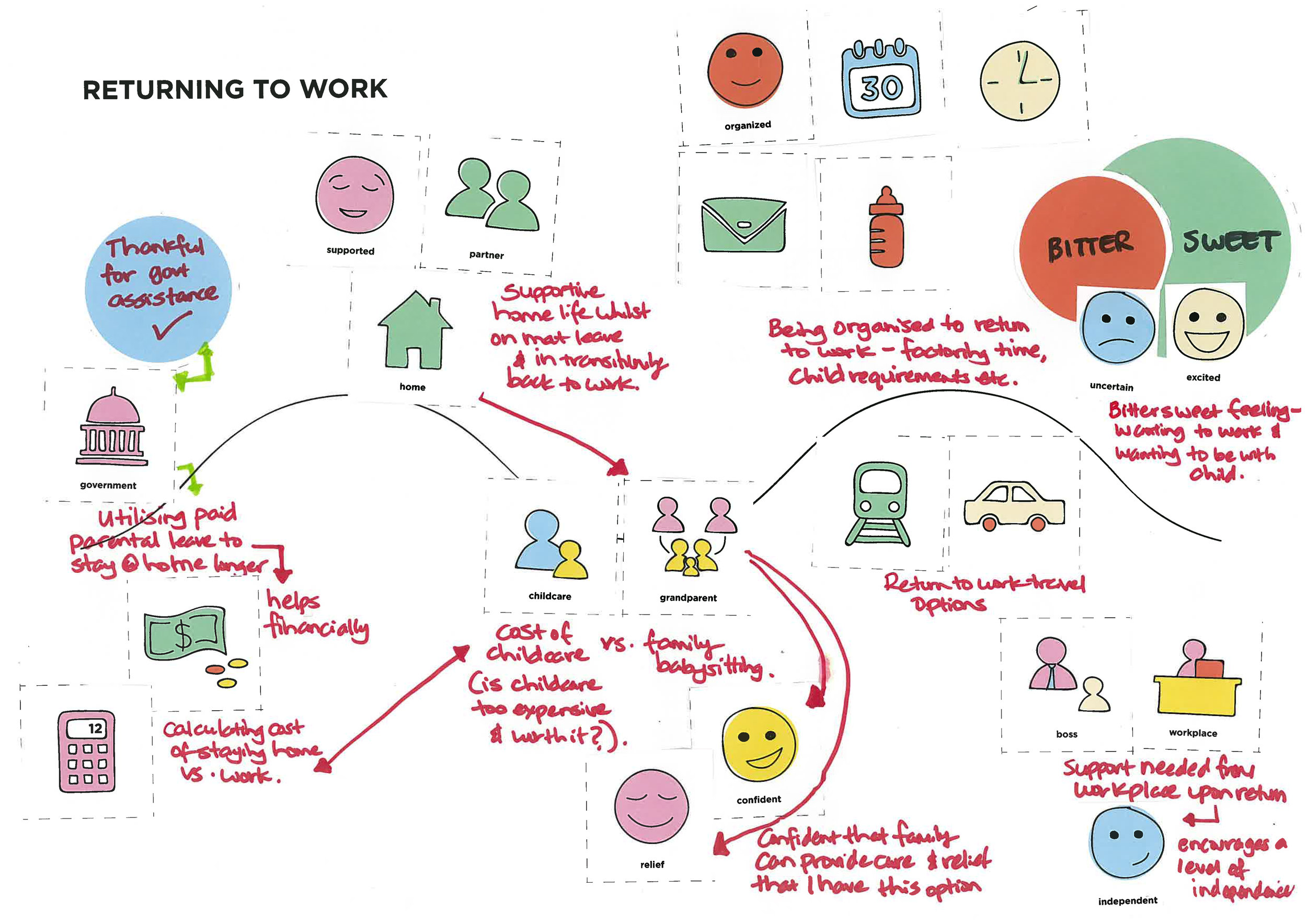Discovering parents’ experiences of returning to work
Life transitions such as having a baby, returning to work or starting a new business are complex and diverse experiences. They involve multiple interactions with government departments and non-government organisations.
Some life transitions are more emotional, more involved and less linear than others. Becoming a carer and Returning to work as a parent are two life transitions we have recently explored for the Digital Transformation Agency.
Through this discovery research we illuminated the concerns, barriers, priorities and capabilities of the people experiencing these life transitions. These stories, strategies and situations are synthesised into visual frameworks, such as a journey map, that provides important context for government agencies to use to guide service improvement.
To include parents in a range of locations and situations, we used online and face-to-face in-context interviews and mini discussion sessions. We met with single parents, same-sex couple families, refugee parents and first time through to fourth time parents working in a range of industries including hairdressing, cabin crew, education, finance and consulting.
To help prepare for the research, parents completed a visual mapping activity (which some found therapeutic to complete). These priming activities give participants time to reflect on their experience and remember important emotions and details, so the time we spend together is optimised.
Research Design: Mixed Methodology and Priming
We also interviewed a range of subject matter experts researching contemporary family life in Australia and some exemplary organisations currently leading the charge in providing a supportive workplace for families. These interviews provided further context, highlighting the structural barriers and entrenched social norms parents navigate during this life transition. We identified issues with the gender pay gap and gendered notions of who should be doing the caring and who should be doing the breadwinning as issues to unpack during our research with parents.
Themes and insights
What happens before going on leave has a significant impact on the return to work experience. The process of returning to work begins during pregnancy.
Along with this key research finding, some other important findings include:
- Accessible, affordable and quality child care plays a vital role in enabling families to return to work.
- Returning to work is a transition for the whole family.
- It takes trust, teamwork and open and ongoing conversations to enable a smooth return to work process.
- Supporting both parents to take parental leave, to skill up and to nurture has positive flow-on effects.
- A more gradual return to work is ideal.
- Returning to work is a transition that happens over several years.
Parents who are able to return to work on their terms and when they feel ready are more motivated and resilient.
The research has been used to help inform current and future work within the DTA.
Family stories: video content for parents with teenagers
We have been working with ReachOut.com for several years and have immense respect for their participatory approach to research and design. We recently conducted research on the ReachOut Parents website, providing insights and stories to inform the creation of engaging videos for parents with teenagers.
The research found that videos need to reference real life stories and situations experienced by Australian families with teenagers. They need to get to the heart of the matter so families can relate and learn from realistic stories.
The project involved two stages of research
We started with in home family immersions as exploratory research. For these sessions we recruited families with experience of peer pressure, bullying, family tension, conflict and stress. To take care of our participants, we made sure families were not in the middle of these challenging issues and were in a good place to discuss the experience.
All participants completed a pre-task to prepare for the interviews. The parents wrote a letter to a friend describing some of the challenges they have experienced and any tips they might like to share with a friend in a similar situation. The young people created a topographical map to represent the kinds of challenges young people face during high school and the things that help or hinder as they navigate each obstacle.
Stage one: exploring to gather candid stories and examples
For the immersions themselves, we met with the parent and young person separately. To speak openly and honestly about the experience we often needed to whisper, close bedroom doors or turn up the music.
During this phase of the research we discovered how diverse and complex life with a teenager can be (even within our small sample).
Parents were often unsure how to manage their own stress and anxiety, and felt unprepared or uncertain when things that worked well for one child didn’t for others.
During the interviews we kept hearing parents and teenagers describing similar emotions and frustrations. Both feel underappreciated, misunderstood, angry and in some instances isolated. It can be a volatile time for everyone. Young people thought parents needed help communicating effectively: staying calm, listening and taking the time to understand how they are feeling beneath the anger.
Insights from the research were used to develop a set of draft videos
Stage two: evaluating and optimising the videos
While the videos were in production we invited parents to review, rate and help optimise the content, style, length and tone of twelve videos.
We created three teams of parents to review four videos each using the ‘Qualtrics’ survey platform.
We knew the content resonated because several parents commented on how much they enjoyed completing the survey.
As an outcome, we identified which videos are ‘good to go’ and a few keys ways the videos could be enhanced to better meet the identified UX Goals.
Parents are hungry for practical tips, strategies and techniques they can apply right away.
The videos are now live and being watched and shared!











